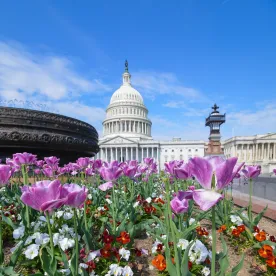The American Rescue Plan Act of 2021 (“ARPA”) provides a 100% COBRA premium subsidy for “assistance eligible individuals” for periods of coverage occurring between April 1, 2021 and September 30, 2021. An “assistance eligible individual” includes any qualified beneficiary who is eligible for COBRA coverage as a direct result of a covered employee’s reduction in hours or involuntary termination of employment.
A key feature of ARPA is that it provides for a special second election period for a qualified beneficiary who either: (1) does not have an election of COBRA coverage in effect on April 1, 2021, but who would be an assistance eligible individual if such election were in effect, or (2) elected COBRA coverage and discontinued that coverage before April 1, 2021. The special election period begins on April 1, 2021 and ends 60 days after the date on which notice is provided to the individual. Plan administrators must provide notice by May 31, 2021.
For individuals who elect COBRA coverage during this special election period, COBRA coverage commences with the first period of coverage beginning on or after April 1, 2021, and does not extend beyond the end of the original period of COBRA coverage that would have applied had the individual elected coverage (and not discontinued such coverage, if applicable). For example, if a qualified beneficiary’s COBRA coverage would have started on December 1, 2019 and the individual elects COBRA coverage during the special second election period, the person’s subsidized COBRA coverage may last from April 1, 2021 through May 31, 2021.
As we have pointed out in our previous blog posts, there are a number of questions that arise in the interpretation of ARPA and administration of the COBRA subsidy. The following are a few interesting quirks about the special second election period:
Spoiled for Choice: Retroactive and Prospective COBRA Coverage Options
Under general COBRA rules, a qualified beneficiary must elect and pay for COBRA coverage retroactively to the date of the loss of coverage. Because COBRA election and payment deadlines are temporarily tolled under COVID-19 relief, as explained here, many individuals who lost coverage several months ago are still within their original COBRA election periods and may elect and pay for COBRA coverage retroactive to their loss of coverage.
Under ARPA, however, qualified beneficiaries may instead elect prospective COBRA coverage, starting April 1, 2021, through the end of the COBRA subsidy period. This creates a planning opportunity, as individuals making an election will have an opportunity to elect COBRA coverage on a retroactive basis (back to their loss of coverage) or on a prospective basis (starting April 1, 2021), depending on their healthcare needs. Regardless of which option such an individual elects, COBRA coverage will only be 100% subsidized from April 1, 2021 through September 30, 2021.
Two Bites at the Apple
Qualified beneficiaries eligible for the special election period described above include individuals who elected COBRA coverage and discontinued that coverage before April 1, 2021, as well as individuals who did not elect COBRA coverage before April 1, 2021—provided that the individual is still within the individual’s maximum COBRA period and lost coverage as a direct result of a covered employee’s reduction in hours of employment or involuntary termination of employment.
Open Issue: The statutory language of ARPA creates some ambiguity as to whether any qualified beneficiary (i.e., an individual who lost coverage due to a qualifying event other than reduction in hours or involuntary termination of employment) and who discontinued coverage before April 1, 2021 but is still within that individual’s maximum COBRA period—may reenroll in COBRA during the special election period, albeit without the COBRA subsidy. Stakeholders have asked the agencies to confirm whether this is the case, as the broader interpretation does not seem consistent with the statutory intent underlying ARPA.
Special Second Election Period May Not Apply to State Law Continuation Coverage
While the COBRA subsidy is available for state law continuation coverage comparable to federal COBRA, the special second election period described above may be limited to periods of continuation coverage provided under federal COBRA. This is because the section of ARPA that provides for the second election period references ERISA, the Internal Revenue Code, and the Public Health Service Act—but does not explicitly address state law programs. This suggests that the special election period might not apply to state law continuation coverage. We note that under the American Recovery and Reinvestment Act of 2009, subsequent agency guidance clarified that state law programs may choose to offer, but were not required to provide, a special second election period. We expect similar clarification with respect to ARPA.
These are some of the issues relating to the special second election period under the ARPA COBRA subsidy. We expect the government agencies to issue guidance soon. Stay tuned for additional coverage and insight.





 />i
/>i

